In the process of designing a conference badge and facing tight deadlines, we need a minimal breakout board for the uC we are using on it in order that the firmware team can already start working on it without having to wait for the first hardware prototype of the full board. This way they can directly use the NINA-W102 instead of having to port the code later on and connect it together with sensors that are on breakouts as well and simulate something that is closer to the real thing.
The source of the KiCAD files is on my github and during PCB layouting I will keep the branch NINAPCBGround up to date as much as possible with frequent commits.
https://github.com/rac2030/breakout-boards/tree/NINAPCBGround/ublox_NINA-W102
If you have any suggestions or review comments, please just shoot them to me as this is my first try in using EDA tools for designing a custom PCB.
Please keep in mind that I do fast iterations so it might change overnight as I do this in my free time and mainly in the night when I'm not working on my day job or have to care about other duties.
 Michel Racic
Michel Racic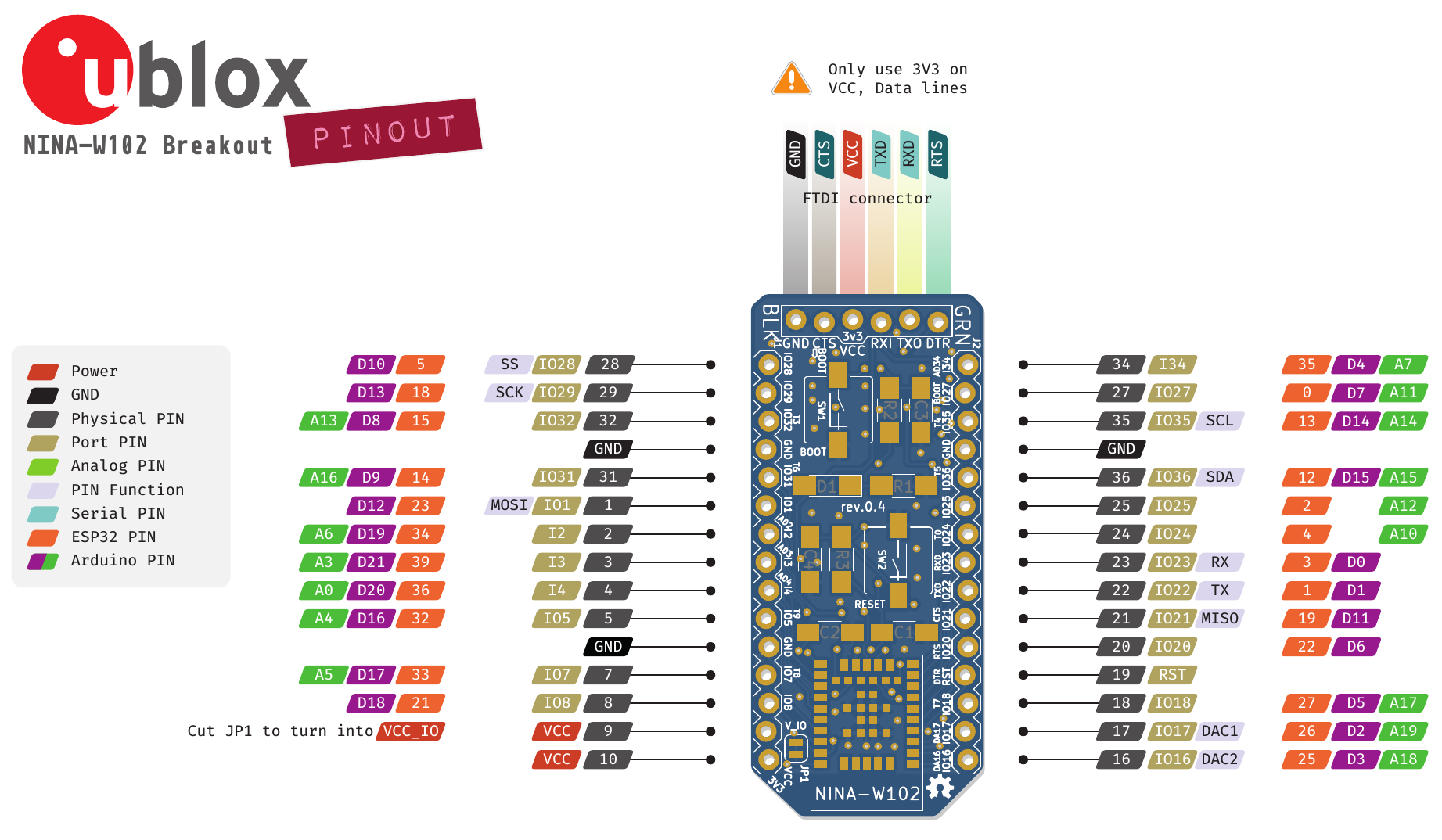
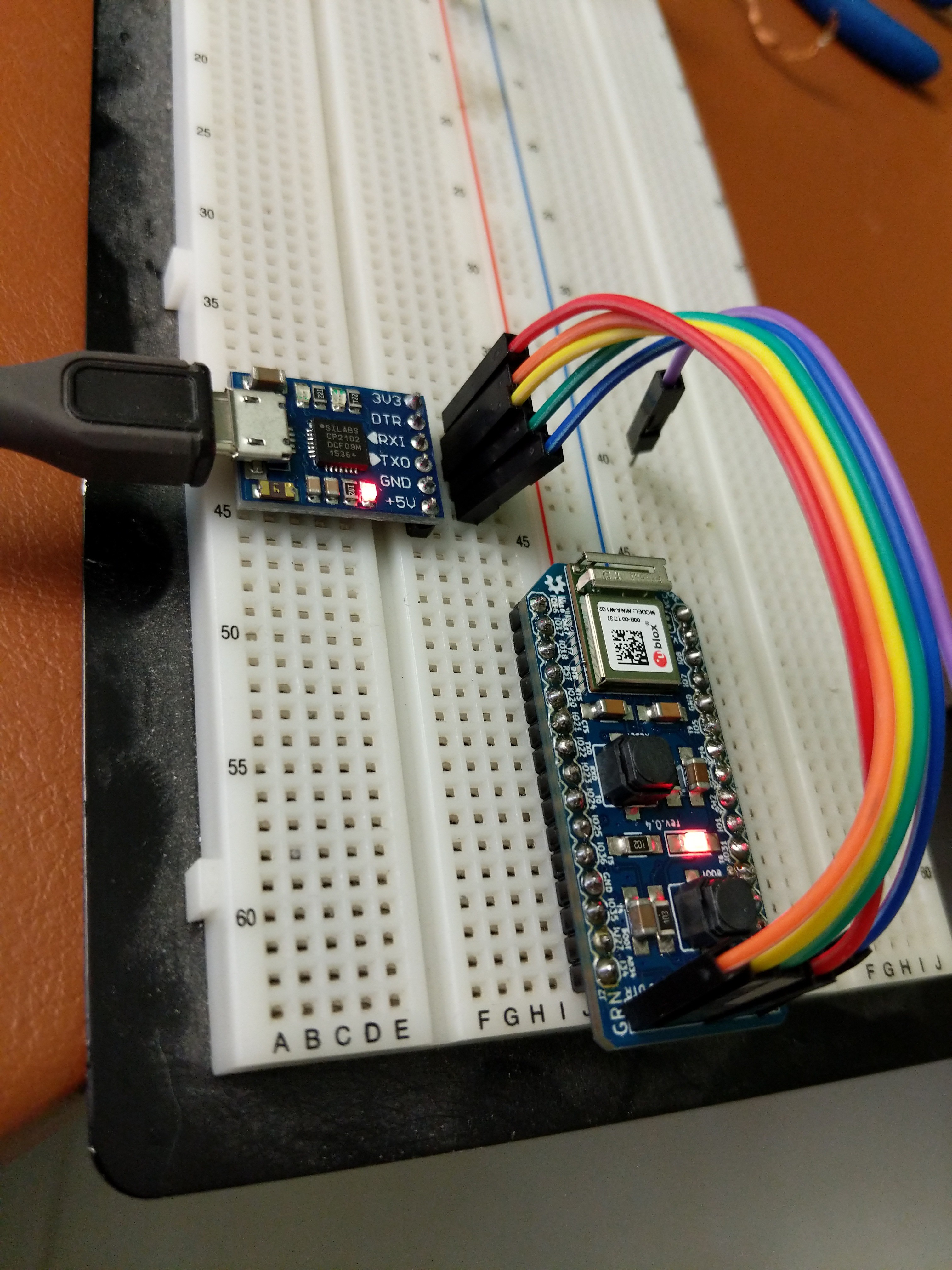
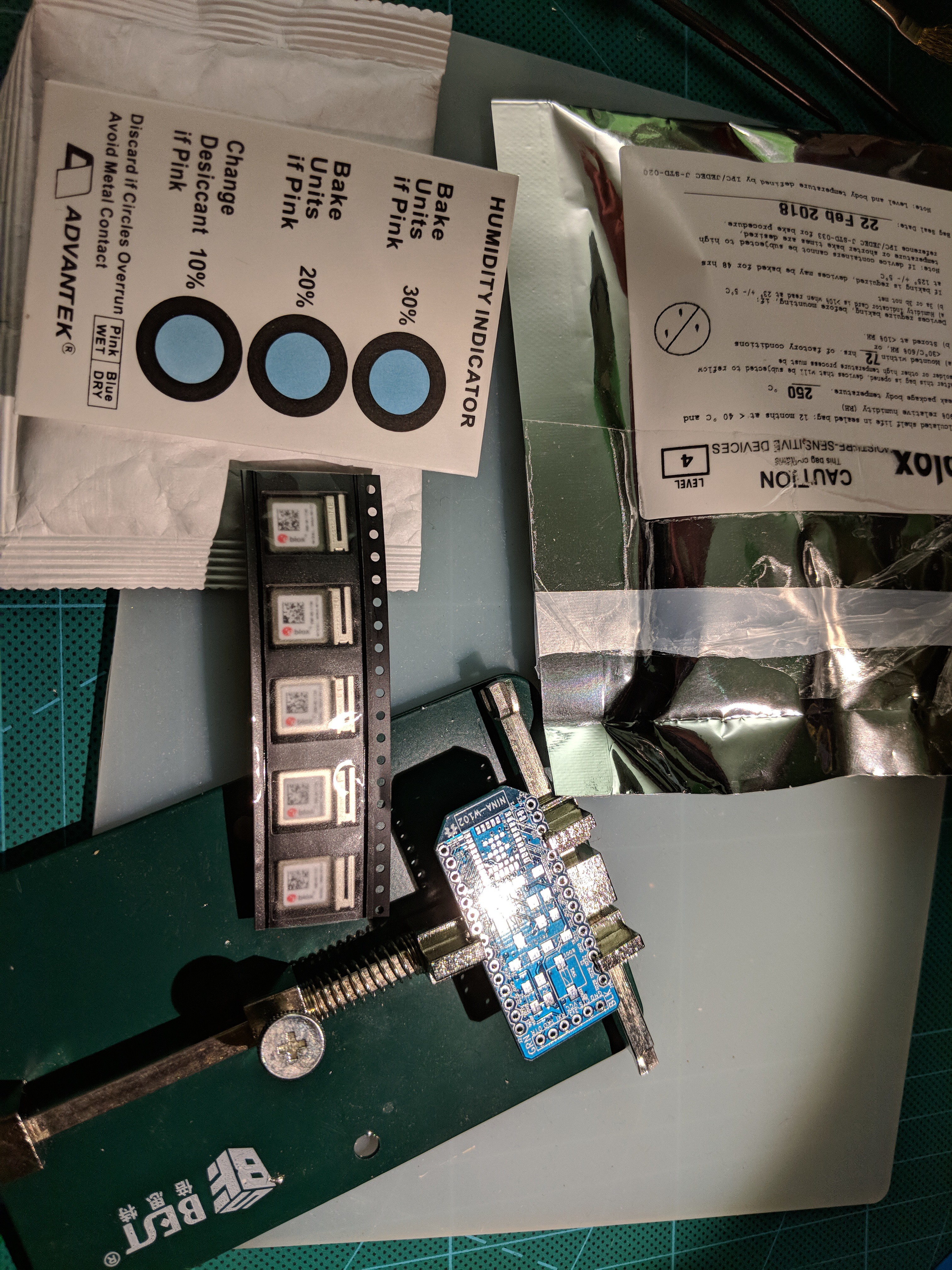
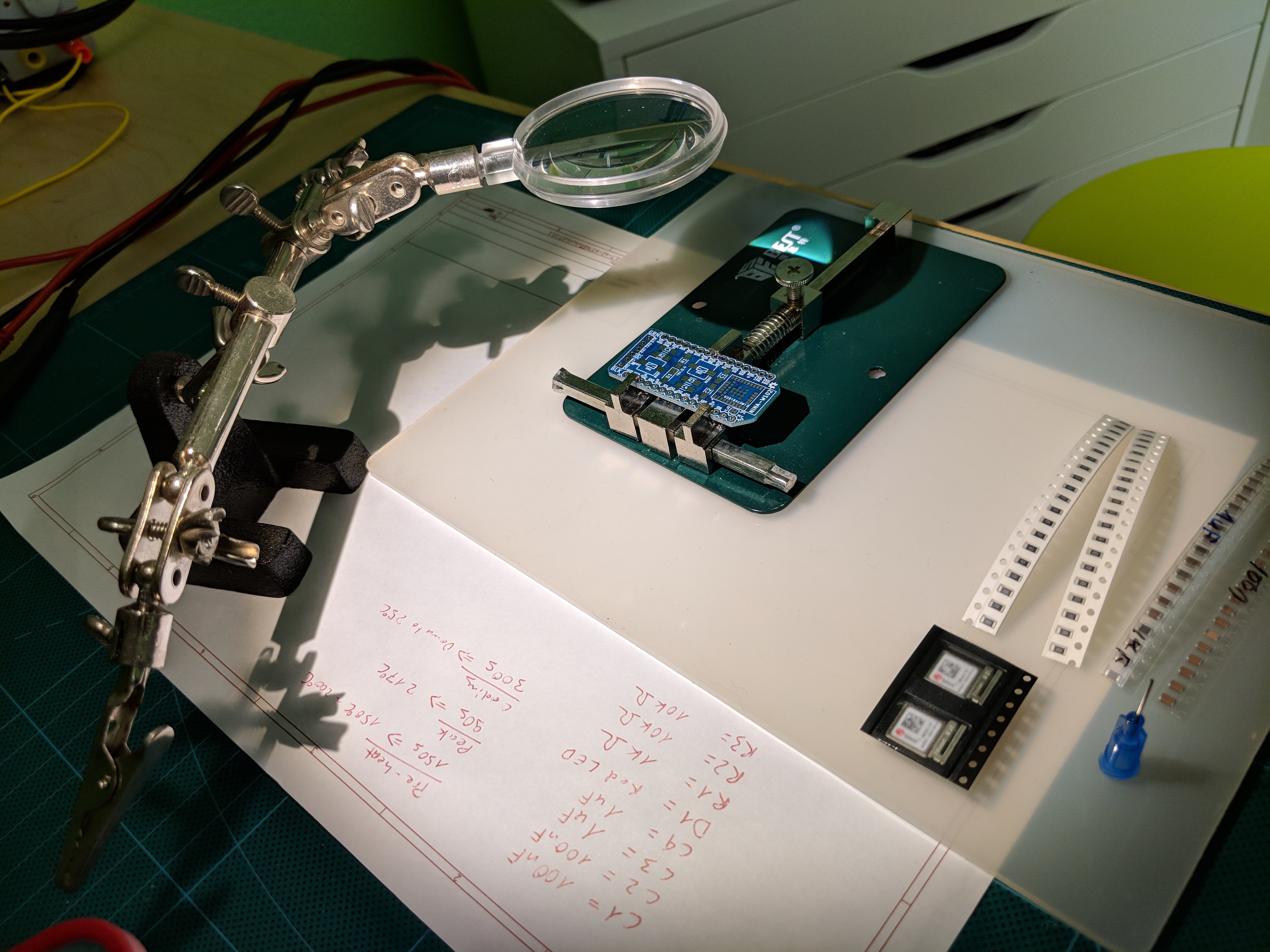

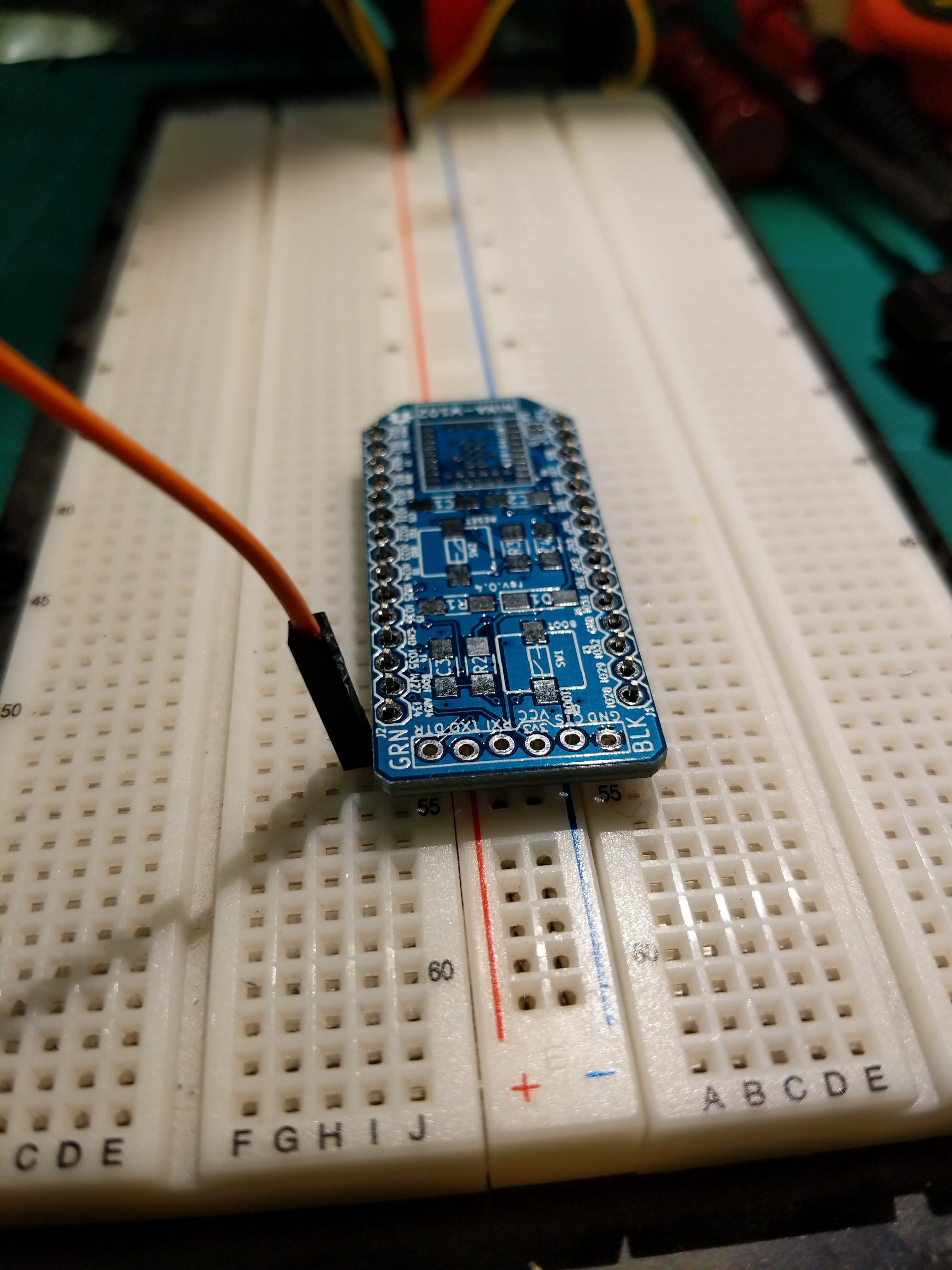



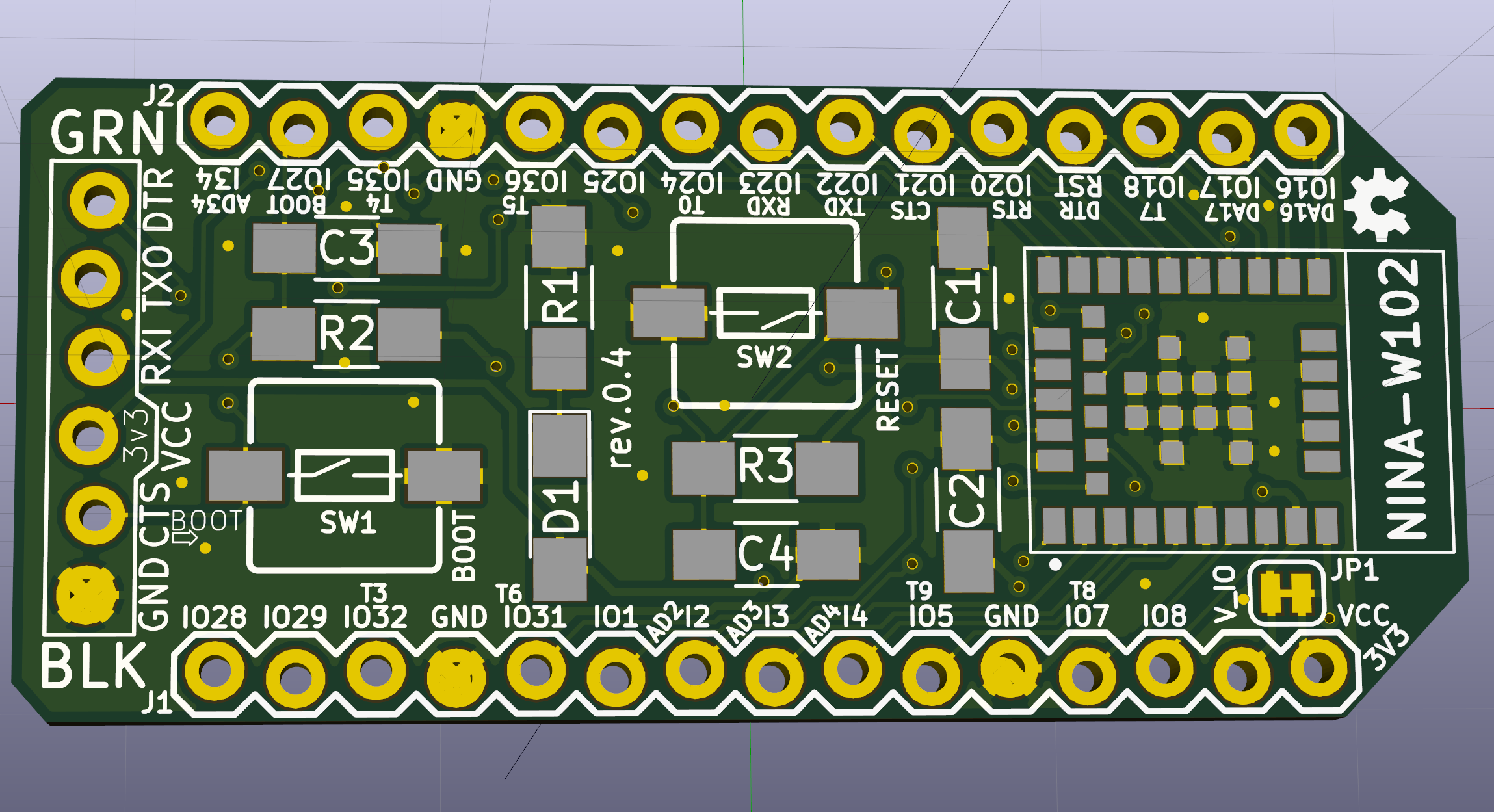
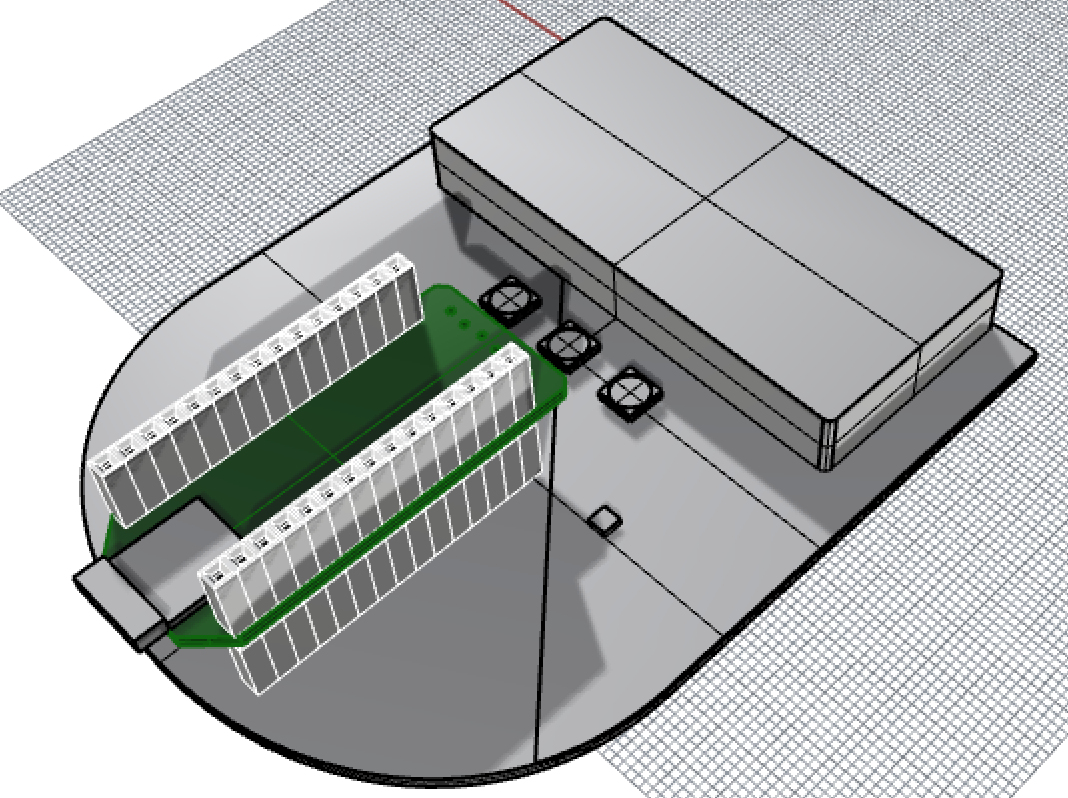
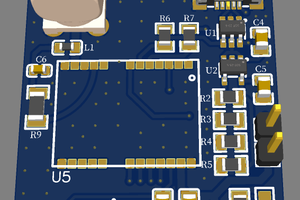
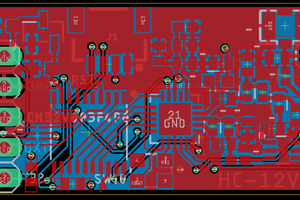
 OzQube
OzQube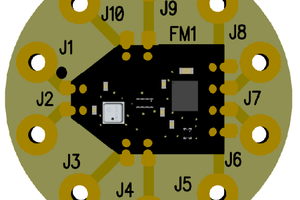
 Chris Hamilton
Chris Hamilton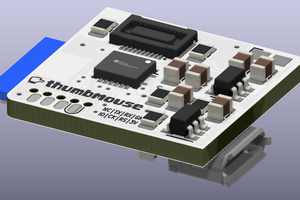
 Matias N.
Matias N.